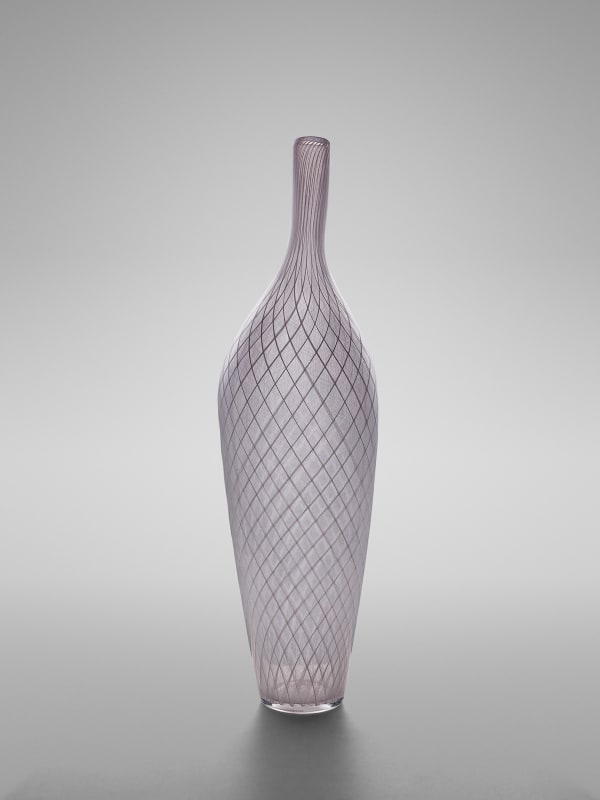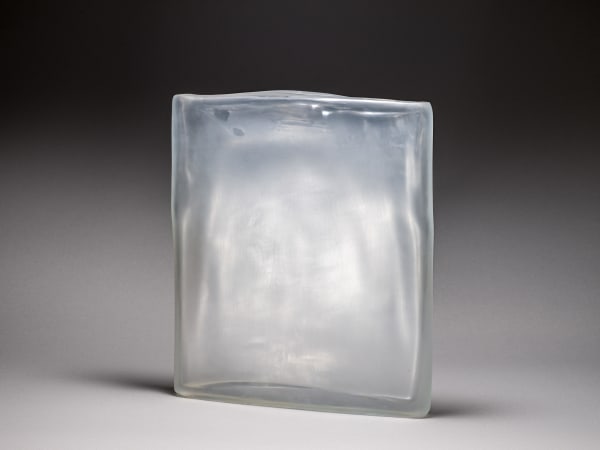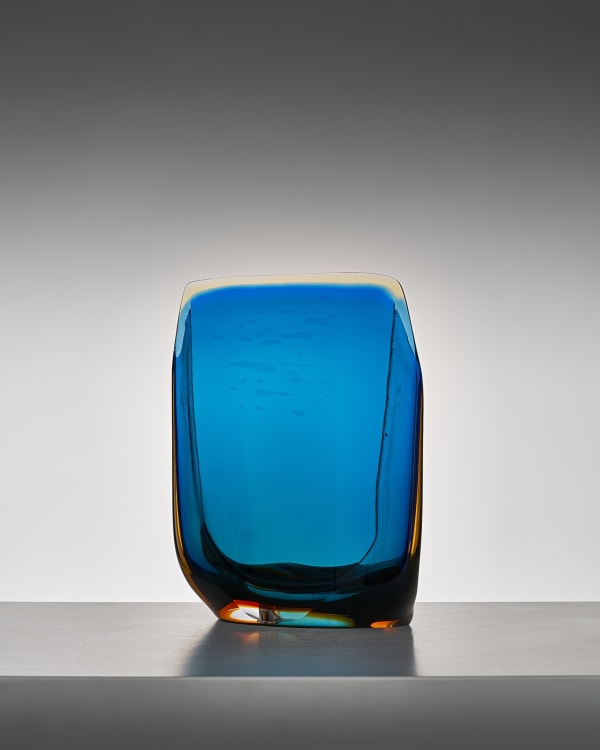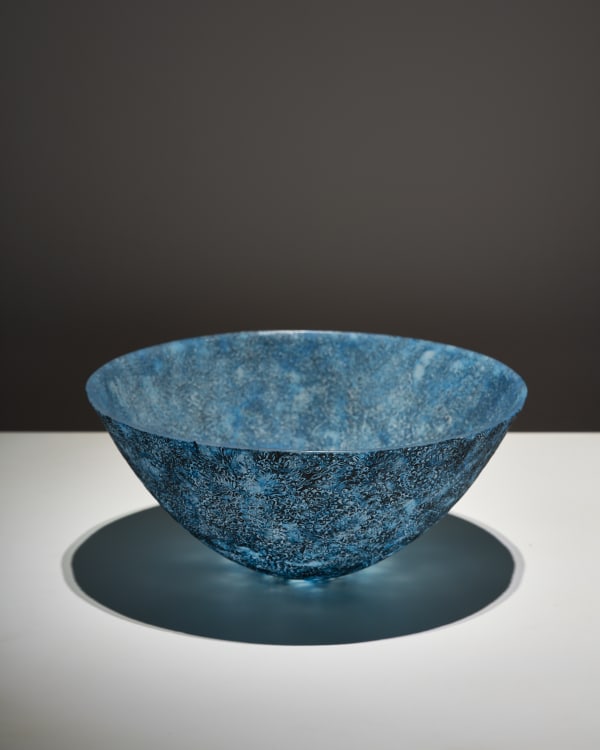-

Kota Arinaga (b. 1978) is an innovative glass sculptural artist who draws on the cross-cultural history of the material. Arinaga’s latest series is an interpretation of the Venetian reticello technique, colorful canes woven into patterns within the glass. Glass has a temporal aspect, requiring careful temperature control and sculpting. Arinaga's glass artworks vary in size in shape, pushing the boundaries of technique and physics.
-

Laura de Santillana (1955–2019) was raised in Venice surrounded by the greatest glass artists of the 20th century. She studied classics and architecture before moving to New York City, where she worked with the Vignelli Associates studio whilst attending the School of Visual Arts. De Santillana went on to design art books and began designing objects and lamps for Venini alongside her father Ludovico, and later de Santillana served as art director of the family business until 1993. Her work on kaiseki glass began a long working relationship with Japan that deeply affected her designs.
-

Massimo Micheluzzi (b. 1957) worked at renowned Venini glass factory in Venice, which began the trajectory of his prolific career in glass. His work evolves classic styles and explores new ways of molding while always remaining ‘true’ to the nature of glass. His signature method is made in mosiaco using murrine; cross-sections of multi-patterned glass canes, then laid out on a plate, fused into a sheet in a furnace, and attached onto a blown vessel. Infinite designs can be created though challenging process. His other common form, battuto, meaning struck or beaten, is a meticulously tedious cold working carving technique that produces the rhythmic channels and grooves apparent in many of Micheluzzi’s works. While many glass artists employ artisans for the latter, Micheluzzi performs the battuto carving himself.
-

Momoo Omuro (b. 1969) embraced the delicated nature of glasswork equpied with specialized skills in metal casting and forging. She had long been interested in glass, and her skills in creating molds for metal casting proved applicable to the pate de verre (paste of glass) technique that she adopted. She artist prepares glass pastes of different colors and arranges them in a pattern in a mold for firing in a kiln. Omuro evinces a dual preoccupation with form and line in her pate de verre creations. That emphasis, along with her refined sense of color, results in a striking fusion of traditional and contemporary, of oriental and occidental. Omuro deploys that fusion exclusively in vessels of one kind or another - perhaps reflecting the beauty-in-utility aesthetic permeating Japanese crafts. Each work is a unique piece; they continue as a living object through exhibition via their interaction with natural materials of light and space, manipulating their glass structure.
-
 Midori Tsukada (b. 1972) has many degrees from Toyama City Institute of Glass Art and Kanazawa Utatsuyama Kogei Kobe. Since 2011, Tsukada has been working in her own studio in Toyama. Tsukada has received numerous accolades in Japan, including the 2001 Honorable Award at the International Exhibition of Glass Kanazawa and the 2009 Honorable Award at the 4th Exhibition of Contemporary Glass Koganezaki in Shizuoka. Her work is held in public collections all over the world, such as Century Museum of Contemporary Art Kanazawa, Notojima Glass Art Museum, Toyama Glass Art Museum, Koganezaki Christal Park Glass Museum and The Museum of Contemporary Design and Applied Arts (MUDAC), Lausanne (Switzerland), Philadelphia Museum of Art in the U.S. Tsukada utilizes gravity in her forms and is characterized by the blues and greens produced by copper leaf. She employs highly-skilled techniques-grinding in a spray of water to create lines of minute delicacy or filing, making a translucence like that of light shining down through the leaves of a forest. They possess a Japanese sensibility evocative of rain, dew, or bamboo groves, filled with a clear atmosphere and organic energy.
Midori Tsukada (b. 1972) has many degrees from Toyama City Institute of Glass Art and Kanazawa Utatsuyama Kogei Kobe. Since 2011, Tsukada has been working in her own studio in Toyama. Tsukada has received numerous accolades in Japan, including the 2001 Honorable Award at the International Exhibition of Glass Kanazawa and the 2009 Honorable Award at the 4th Exhibition of Contemporary Glass Koganezaki in Shizuoka. Her work is held in public collections all over the world, such as Century Museum of Contemporary Art Kanazawa, Notojima Glass Art Museum, Toyama Glass Art Museum, Koganezaki Christal Park Glass Museum and The Museum of Contemporary Design and Applied Arts (MUDAC), Lausanne (Switzerland), Philadelphia Museum of Art in the U.S. Tsukada utilizes gravity in her forms and is characterized by the blues and greens produced by copper leaf. She employs highly-skilled techniques-grinding in a spray of water to create lines of minute delicacy or filing, making a translucence like that of light shining down through the leaves of a forest. They possess a Japanese sensibility evocative of rain, dew, or bamboo groves, filled with a clear atmosphere and organic energy.









